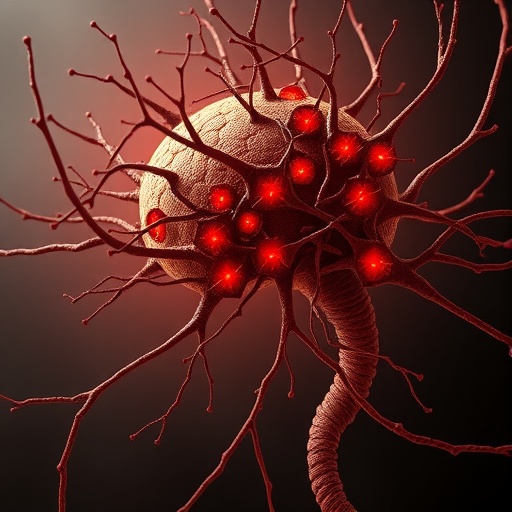
CHAMPAIGN, Ill. — Efforts to treat myotonic dystrophy type 1, the most common form of muscular dystrophy, are in their infancy. In a new study, researchers report they have added new capabilities to an experimental drug agent that previously defeated only one of DM1's many modes of action. Their retooled compounds interrupt the disease's pathology in three ways.
"We've rationally designed something to target multiple pathways, which is contrary to the traditional thinking in medicinal chemistry, where you have one target, one drug," said University of Illinois chemistry professor Steven Zimmerman, who led the research with graduate students Lien Nguyen and Long Luu. "People are slowly discovering that drugs that hit multiple targets are actually better."
The team reports its findings in the Journal of the American Chemical Society.
DM1 (but not Duchennes muscular dystrophy) results from a genetic error that causes expansion of a region of a particular gene, called DMPK. This gene includes a repeated, three-letter sequence of nucleotides, the gene's chemical building blocks. Normal cells contain as many as 35 of these repeats, but sometimes mutation pushes the number of repeats beyond 50, which can lead to symptoms of the disease. Mutant DMPK genes often continue to expand, amplifying the health problems that can result. In some people, the gene includes as many as 10,000 repeats.
No drugs are available to treat DM1, which afflicts an estimated one in 8,000 people worldwide.
Scientists are gradually learning how the disease impairs cells. When mutant DMPK is converted into RNA in a first step of protein production, the repeated sequences in the RNA cause it to bind to another protein, MBNL, which regulates RNA processing. When bound by the mutant RNA, MBNL cannot function properly, causing a cascade of problems in protein production, Zimmerman said.
"Dozens of other proteins become dysregulated," he said. "There's a chloride channel that causes heart arrhythmias. There's an insulin receptor that, when it's dysregulated, gives diabetic symptoms."
In earlier work, Zimmerman and his colleagues developed a compound that stopped the mutant RNA from binding to MBNL. But the disease has other means of creating havoc in cells, researchers have since found. For example, the cell translates the mutant RNA into proteins that also turn out to be toxic. And the mutant RNA interferes with the function of other proteins besides MBNL.
"The disease is like a hydra," Zimmerman said. "We cut off one of its modes of action and we learn about two more that need to be dealt with."
Nguyen and Luu tackled this problem by tethering new biologically active appendages to the lab's original compound, creating multitarget drugs that are small enough to get easily into cells. In tests, they found that the new compounds have three modes of action. One, they stop the process by which the mutant DNA is converted into RNA. Two, they bind to the mutant RNA and prevent it from attaching to the regulatory protein, MBNL. And three, they chop up the mutant RNA, a process that is slow but appears to be effective in in vitro experiments.
The most potent compounds the researchers developed reduce levels of the mutant RNA in cells that replicate the pathology of DM1. The new compounds also reversed two symptoms of the disease in a fruit fly model of DM1.
"The new compounds would need to work effectively in mice and pass preclinical benchmarks before they can be tried in humans," Zimmerman said. "It is encouraging that a different approach using a DNA analog is already in clinical trials in human patients."
The advantage of the new agents under development in Zimmerman's lab is their small size, he said.
"Small molecules are much easier to make than larger compounds, they are easier to get into cells and their potential for getting into the brain is higher," he said.
###
The research team also included Shaohong Peng and H.Y. Edwin Chan of the Chinese University of Hong Kong and U. of I. graduate student Julio Serrano.
The National Institutes of Health and the Muscular Dystrophy Association supported this research.
Editor's notes:
To reach Steven Zimmerman, call 217-333-6655; email [email protected]
The paper "Rationally designed small molecules that target both the DNA and RNA causing myotonic dystrophy type 1" is available online [LINK: http://pubs.acs.org/doi/abs/10.1021/jacs.5b09266] or from the U. of I. News Bureau. [LINK to email: [email protected]]




